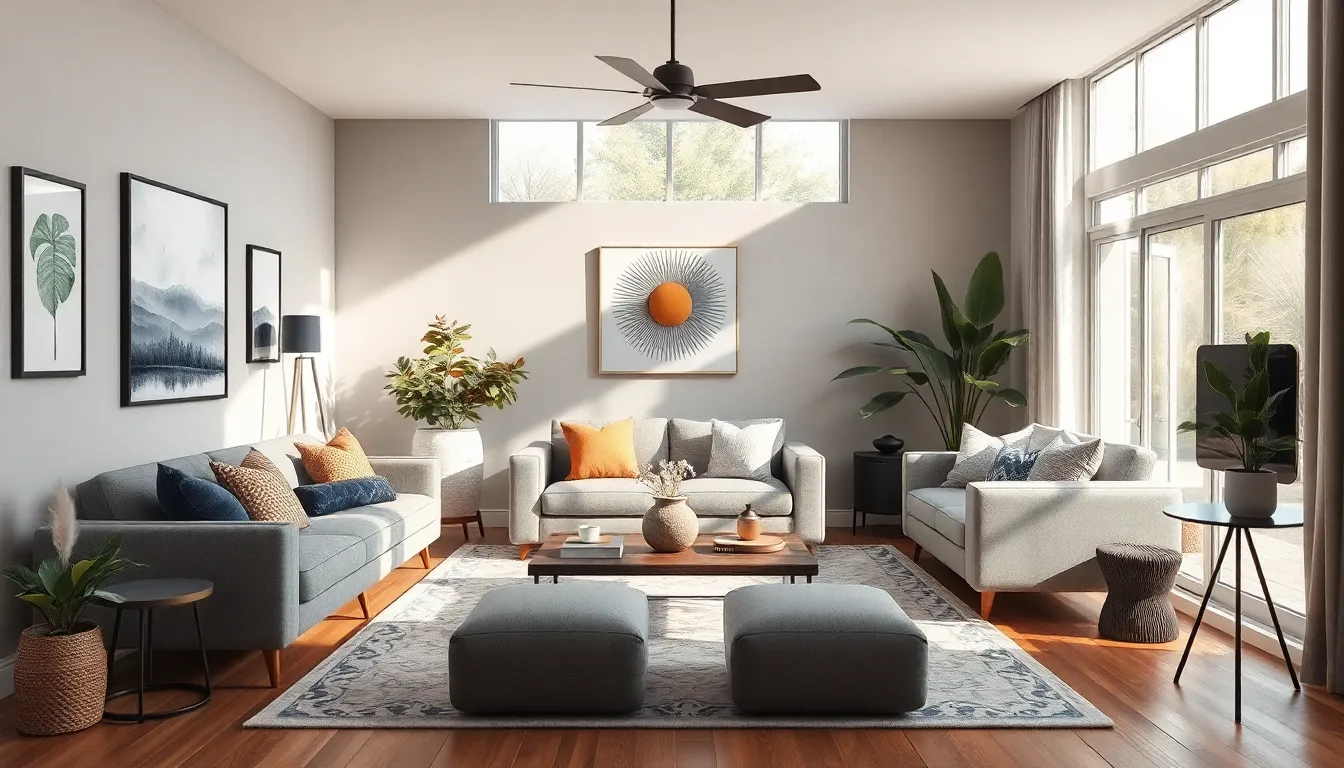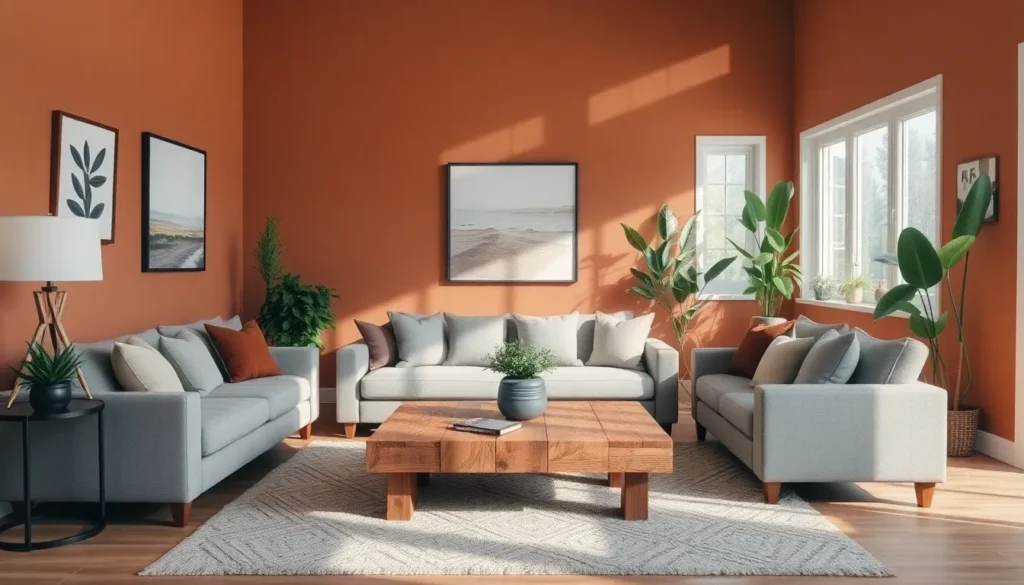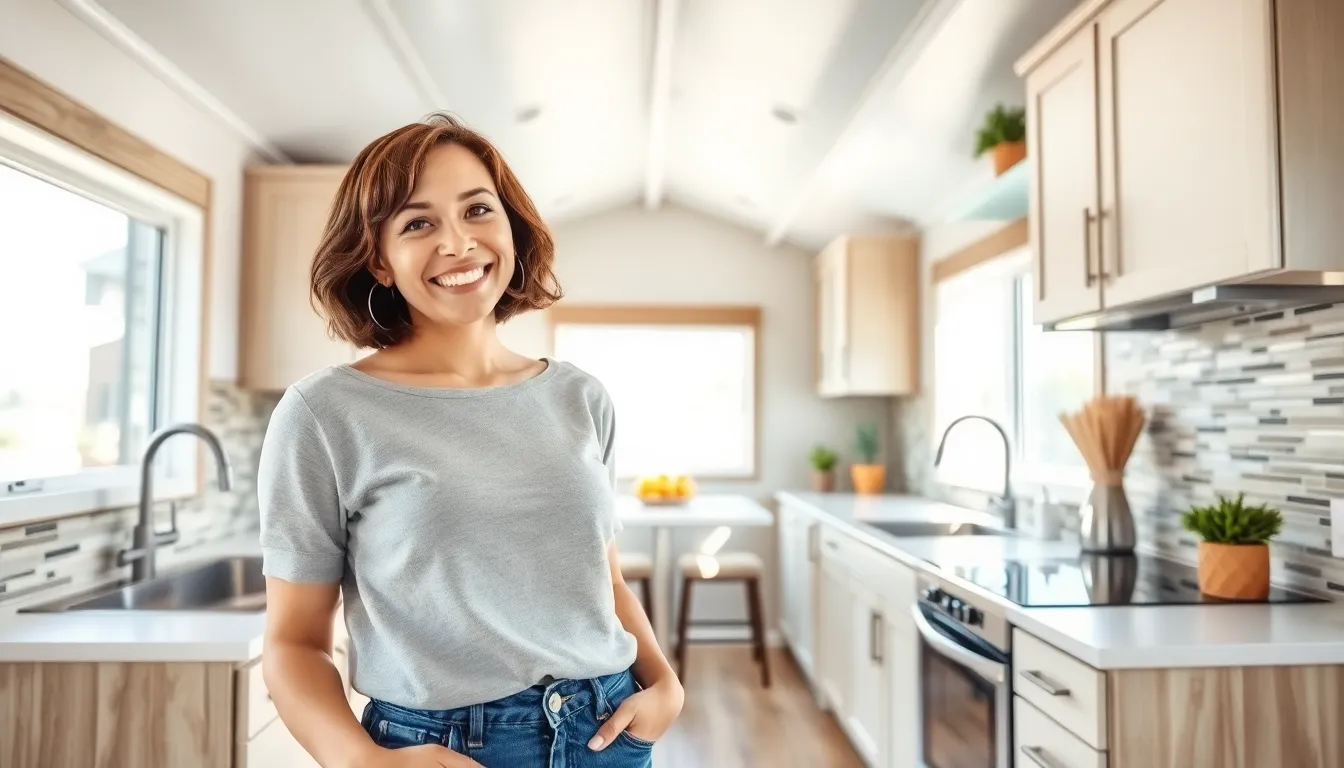A living room redesign can transform the heart of a home from drab to fab faster than you can say “throw pillows.” It’s the space where memories are made, Netflix marathons are held, and that one awkward family gathering takes place. So why settle for a room that feels more like a waiting area than a cozy retreat?
Table of Contents
ToggleWhat Is Living Room Redesign?
Living room redesign involves reconfiguring and updating the interior space to enhance functionality and aesthetics. This process can include altering the furniture arrangement, updating color schemes, or incorporating new decor items. Designers often focus on creating a harmonious atmosphere that caters to the needs of the residents.
Changing the layout can significantly improve the flow of movement. For instance, arranging seating to encourage conversation promotes social interactions. Selecting a fresh paint color can alter the mood of the room; warm tones inspire coziness while cool shades provide tranquility.
Incorporating versatile furniture is essential. Multi-functional pieces allow homeowners to maximize space, especially in smaller living rooms. For example, an ottoman that doubles as storage combines style and practicality.
Lighting plays a crucial role in living room redesign. Natural light enhances openness, while strategically placed lamps create an inviting ambiance at night. Layered lighting options, such as floor lamps and table lamps, enhance depth and interest.
Textures and materials also contribute to the redesign process. Mixing fabrics, like soft throw pillows and a smooth rug, adds comfort and visual appeal. Natural elements, such as wood or plants, introduce warmth and vitality to the space.
Thoughtful accessorizing completes the transformation. Artwork, decorative items, and plants personalize the living room while reflecting individual tastes. These elements foster an inviting environment for gatherings, family moments, and relaxation.
Ultimately, living room redesign revitalizes a central space in the home. It turns the area into a multifunctional hub, enriching daily life and enhancing overall enjoyment within the residence.
Importance of Living Room Redesign

A living room redesign significantly enhances the overall ambiance of a home, transforming it into a cozy, inviting space perfect for gatherings and relaxation.
Enhancing Aesthetic Appeal
A living room’s aesthetic appeal matters, influencing perceptions and setting the tone for the entire home. Eye-catching design elements draw attention, while a cohesive color palette creates visual harmony. Incorporating modern decor styles keeps the space fresh and relevant. Unique furniture pieces serve as focal points, sparking conversation. Accents like artwork and decorative items allow homeowners to express personal style and taste. Changes such as reupholstering furniture can refresh worn-out items, extending their life while improving aesthetics. Natural light plays a key role in showcasing the redesigned space, highlighting colors and textures.
Improving Functionality
Improving functionality is vital in a living room redesign. Smart furniture arrangements enhance movement flow, making social interactions seamless. The incorporation of multi-functional furniture allows for versatile use, catering to various activities. Strategic placement of seating encourages conversation and fosters connections among guests. Adequate lighting solutions, both natural and artificial, create an adaptable environment for different occasions. Using accessible storage solutions keeps the room organized, maintaining a clutter-free atmosphere. Thoughtful layout adjustments can maximize space, making even compact living areas feel open and inviting.
Key Elements to Consider in Living Room Redesign
Redesigning a living room involves several key factors that significantly impact the overall outcome of the space.
Color Schemes
Colors set the mood in a living room. Warm hues like reds and yellows create an inviting atmosphere. Conversely, cool shades such as blues and greens promote tranquility. Selecting a cohesive palette enhances visual harmony, making the space feel more unified. Complementary colors can draw the eye or highlight architectural features. Consider using accent walls for added character. Different textures, achieved through paint finishes or wallpaper, contribute to the room’s depth. Aim for balance, ensuring no color overshadows another. Undertones also matter; they influence how colors interact and affect the overall ambiance.
Furniture Selection
Furniture shapes the functionality of a living room. Choosing versatile pieces is essential for maximizing space usage. Opt for sofas that offer comfort without overwhelming the area. Occasional tables can provide flexibility in arrangements, while storage ottomans serve a dual purpose. Focal points, like statement chairs, can create visual interest and make conversations flow naturally. It’s important to measure the space accurately before purchasing any items. This approach ensures proportional furniture that allows for easy movement. Sustainable materials not only enhance aesthetics but also contribute to an eco-friendly environment.
Lighting Options
Lighting illuminates a living room’s design. Incorporating multiple light sources creates versatility for different activities. Natural light establishes a warm and inviting space during the day. Use sheer curtains to maximize daylight without sacrificing privacy. Layered lighting, which includes ambient, task, and accent fixtures, enhances both functionality and mood. Ceiling fixtures serve as general illumination, while floor or table lamps offer localized light for reading or relaxation. Dimmable lights allow for adjustments throughout the day, catering to various needs. Finally, strategically placed lamps can accentuate artwork or architectural details, adding flair to the redesigned living room.
Popular Trends in Living Room Redesign
Living room redesign trends reflect evolving preferences for function and aesthetics. Homeowners increasingly seek styles that combine comfort with modern sensibilities.
Minimalist Designs
Minimalist designs emphasize simplicity and functionality. Clean lines and uncluttered spaces create an inviting atmosphere. Furniture pieces serve dual purposes, maximizing usability without overwhelming the space. Neutral color palettes often dominate these designs, enhancing light and openness. Décor items are intentional and limited, allowing each piece to shine. Natural materials like wood and stone further accentuate the minimalistic approach. Minimalism promotes tranquility, making it ideal for spaces dedicated to relaxation and socialization.
Eco-Friendly Materials
Eco-friendly materials are gaining traction in living room redesigns. Sustainable options like reclaimed wood, bamboo, and recycled metal offer durability and style. Using natural fabrics such as organic cotton and linen supports environmentally responsible choices. Homeowners appreciate products that are free from harmful chemicals, creating a healthier indoor environment. Energy-efficient lighting solutions, like LED bulbs, reduce electricity consumption while offering warm illumination. Indoor plants also contribute to sustainability by improving air quality. By integrating eco-friendly elements, living rooms become not only stylish but also conscientious spaces reflecting a commitment to the planet.
Tips for a Successful Living Room Redesign
Successful living room redesign hinges on careful consideration and planning. Implementing smart strategies maximizes the outcome.
Budgeting and Planning
Establishing a clear budget serves as the foundation of the redesign. Knowing spending limits helps prioritize essential upgrades, preventing unexpected costs. Allocating funds for furniture, decor, and lighting aids in focused decision-making. Creating a detailed plan ensures the project progresses smoothly, with timelines that match individual schedules. Researching prices and comparing options fosters informed choices. Organizing ideas through mood boards or lists streamlines coordination, aligning visual elements with the overall theme. Shopping sales or considering second-hand options can reduce expenses, maximizing value without sacrificing quality.
DIY vs. Hiring Professionals
Deciding between DIY efforts and professional assistance impacts the redesign process. Assessing personal skills and experience levels guides this decision. Those with a knack for handiwork may enjoy tackling smaller projects independently, while complex tasks may lean towards professionals. Hiring experts provides access to specialized knowledge, ensuring high-quality results. They streamline the execution of intricate designs, particularly in larger spaces. Balancing budget constraints with desired outcomes influences choices; DIY saves money but requires time and effort. Conversely, professionals deliver efficiency, resulting in less personal involvement and a polished appearance.
A living room redesign can breathe new life into a home. By focusing on aesthetics and functionality, homeowners can create a space that fosters connection and relaxation. Thoughtful choices in color schemes, furniture, and lighting can transform the ambiance, making it inviting for gatherings or quiet moments.
Incorporating trends like minimalist designs and eco-friendly materials not only enhances the visual appeal but also promotes a healthier living environment. With careful planning and consideration of budget, anyone can achieve a successful redesign that reflects their personal style. Ultimately, a well-designed living room becomes a cherished space where memories are made and everyday life is enriched.





